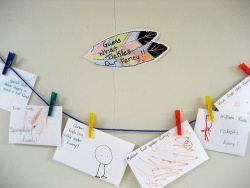Delegation

Photo by Regina Kaute/PIXELIO (Access: 28.09.2009)
Short description
Delegation involves transferring the power to decide and assign tasks
from one person to another. This is a special form of division of
labor, where the leadership responsibility remains with the person
delegating but the responsibility for action is given to someone else.
Process description
For the person delegating:
Please verify to what extent you really want to delegate.
Divide your tasks into less and more important ones.
Define the tasks clearly.
Think who would be best for taking on the given task.
Inform the person you want to delegate a task to as early as possible.
Provide them with the necessary information.
Coordinate the delegated tasks.
Ask for a progress report on the delegated tasks without limiting
the ability for self-determined actions and decisions.
Use delegation as a means to motivate and empower others.
Make sure people you delegate to get the required training to be
able to accomplish the task.
Delegate early on and for a longer time period. You should delegate
similar tasks to the same person.
Pass on complete tasks not just partial tasks.
Avoid delegating one task to two people.
Ask whether the people you want to delegate a task to are willing
and able to take it on.
For the person taking on the task:
Inform the person who delegated the task to you in regular intervals
and thoroughly about to what extent objectives have been reached and
let them know about successes and problems.
Ask for objectives, milestones, conditions and the specifics of the tasks.
Obtain the required authorisations, also financial ones in order to
be able to act independently.
Talk about existing problem as soon as they arise and ask the person
you delegated the task to you for support.
Required resources
Depends on the delegated tasks.












